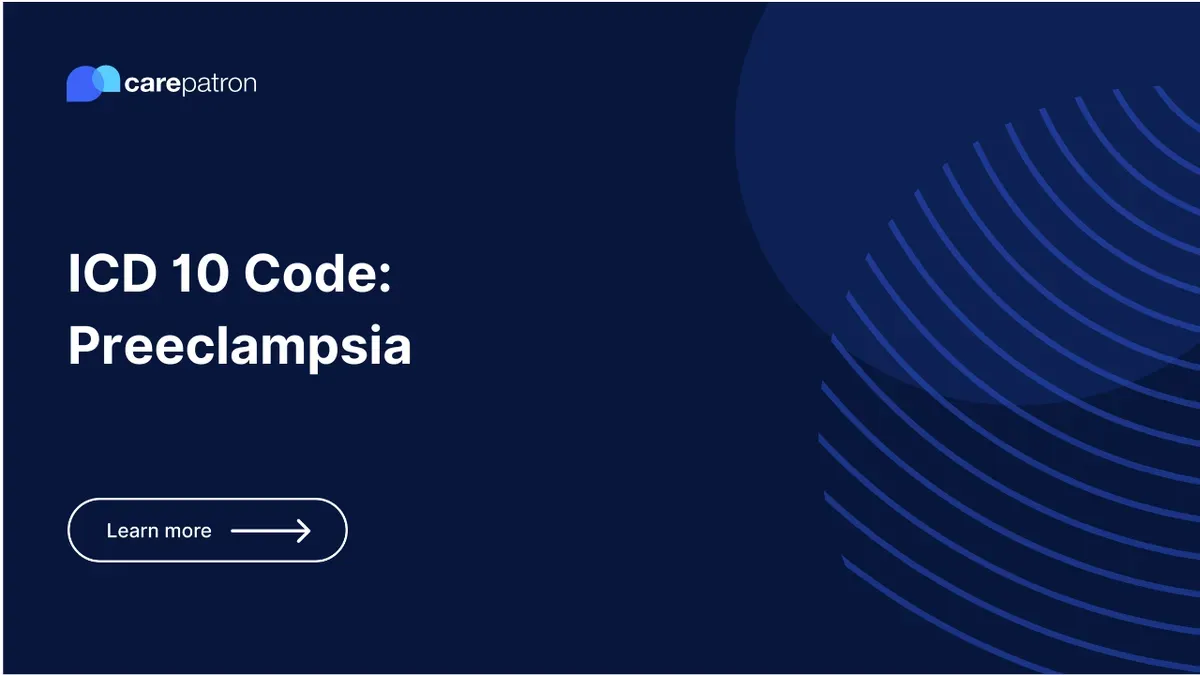
Preeclampsia ICD-10-CM Codes
A detailed look at Preeclampsia ICD codes, with insights into clinical descriptions, billability, synonyms, and unique FAQs.
Use Code
Commonly asked questions
Severe preeclampsia can lead to complications like eclampsia (seizures), stroke, organ damage, low birth weight, or premature birth in infants.
Preeclampsia refers to high blood pressure and damage to another organ system, often the liver and kidneys, during pregnancy. Eclampsia is a more severe form of preeclampsia that includes seizures.
While there's no surefire way to prevent preeclampsia, regular prenatal visits, healthy lifestyle choices, and managing existing medical conditions can help reduce risk.
EHR and practice management software
Get started for free
*No credit card required
Free
$0/usd
Unlimited clients
Telehealth
1GB of storage
Client portal text
Automated billing and online payments
